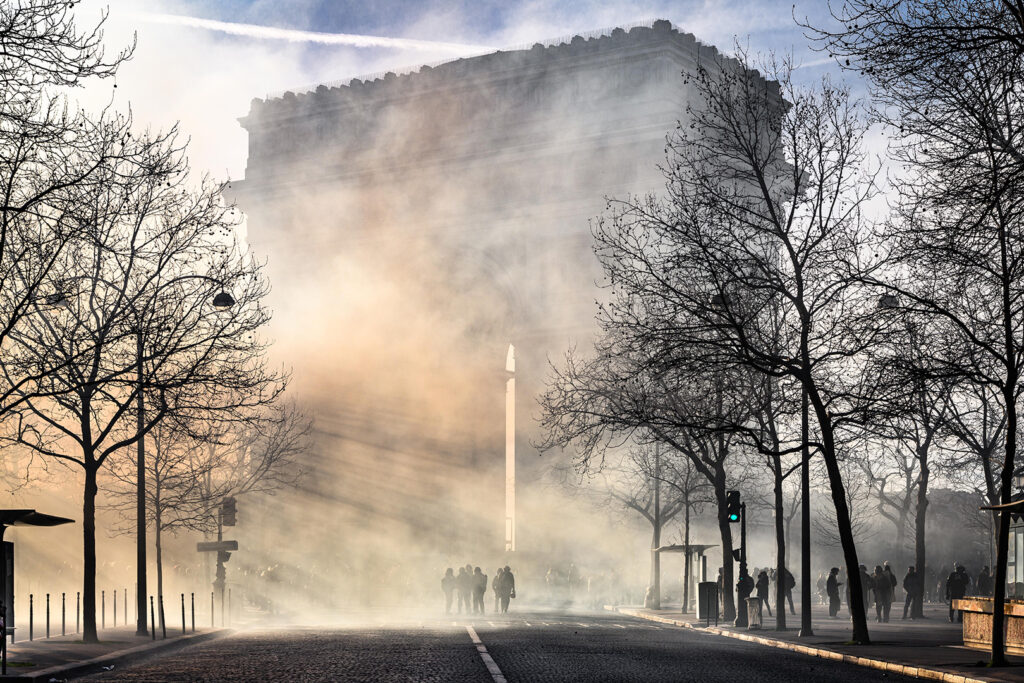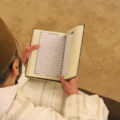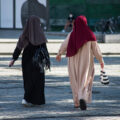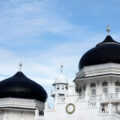France’s laïcité: A contest of culture and religion?
France’s laïcité: A contest of culture and religion?
Our analyst Muhammad Faisal Khalil looks at the debate on France’s secularism, and its role in marginalising cultural expressions and religious freedoms.
This weekly comment was written by Muhammad Faisal Khalil and reflects his personal analyses and opinions, rather than those of EARS.
The longstanding principle of secularism (laïcité) in France has been under intense scrutiny in recent times, with religious symbols, particularly those associated with Islam, finding themselves at the heart of a heated national debate. Critics, like the late sociologist Bruno Latour, and the legal scholar Rim-Sarah Alouane, have contended that the rigid use of laïcité by the French state risks morphing it into an instrument of discrimination and marginalisation.[1] A recent controversy surrounding the Muslim abaya illustrates these critiques poignantly.[2]
The abaya: cultural expression or religious symbol?
The abaya is a loose robe commonly worn by women in many Muslim-majority countries. The French Education Minister, Pap Ndiaye, suggested that the garment could be considered a religious symbol under the laïcité laws, subject to potential restrictions in schools. However, this viewpoint is not universally shared. The French Council of Muslim Worship (CFCM), for instance, strongly argued that the abaya is a cultural garment without any specific religious connotation.[3] The dispute brings to the forefront the complexities of distinguishing between cultural and religious symbols, and raises questions about potential bias in the interpretation and enforcement of laïcité.
Secularism in a multicultural world
The debate over the abaya is a telling reflection of a broader issue: the evolving struggle of defining and applying laïcité in a multicultural society. Latour and Alouane say that this strict view of secularism can sometimes be used in a wrong way, like to discriminate or marginalise people.
In his work Face à Gaïa, Latour notes that modern societies are often “immunised against doubt,” and believe they possess definitive answers about the role of religion in public life.[4] Latour warns that our world is not one-dimensional, and that secularism should not be perceived as a panacea for managing religious diversity.[5] Instead, it risks becoming a tool for suppression if used without a nuanced understanding of the complex intersections of culture and religion.
As has been examined by EARS previously, Alouane echoes this perspective. She warns about the “weaponization of laïcité” against religious minorities, in this case, Muslim women who bear the brunt of laïcité debates, as shown in past controversies around the headscarf and burkini.[6] The abaya controversy illustrates this tension between maintaining secularism and protecting religious freedom in a pluralistic society.
Reevaluating laïcité
The recent debate over the abaya shows that we need to reconsider laïcité, and how it is being used. It provides an opportunity to reflect on the contemporary challenges laïcité faces, particularly in relation to religious symbols in public spaces. It is crucial to find a way to respect the guidelines of a country that has no official religion while ensuring that the cultural and religious freedoms of its citizens are not interfered with. If this balance is not maintained, laïcité could potentially promote discrimination and exclusion instead of encouraging acceptance and diversity.
To prevent the misuse of laïcité, understanding the overlap and differences between culture and religion is important. Laïcité needs to be applied in a manner that respects these complexities. As the debate continues, the voices of critics of the system need to be heard to ensure that laïcité fulfils its intended purpose: facilitating peaceful cohabitation and mutual respect among people of diverse religious and cultural backgrounds.
This weekly comment was written by Muhammad Faisal Khalil and reflects his personal analyses and opinions, rather than those of EARS.
Interested in similar topics? Go to our Dashboard.
Sources
[1] Face à Gaïa: Huit conférences sur le nouveau régime climatique; The Weaponization of Laïcité
[2] Why the abaya is at the centre of France’s latest secularism row – The Local
[3] Why the abaya is at the centre of France’s latest secularism row – The Local
[4] Face à Gaïa: Huit conférences sur le nouveau régime climatique
[5] Face à Gaïa: Huit conférences sur le nouveau régime climatique






